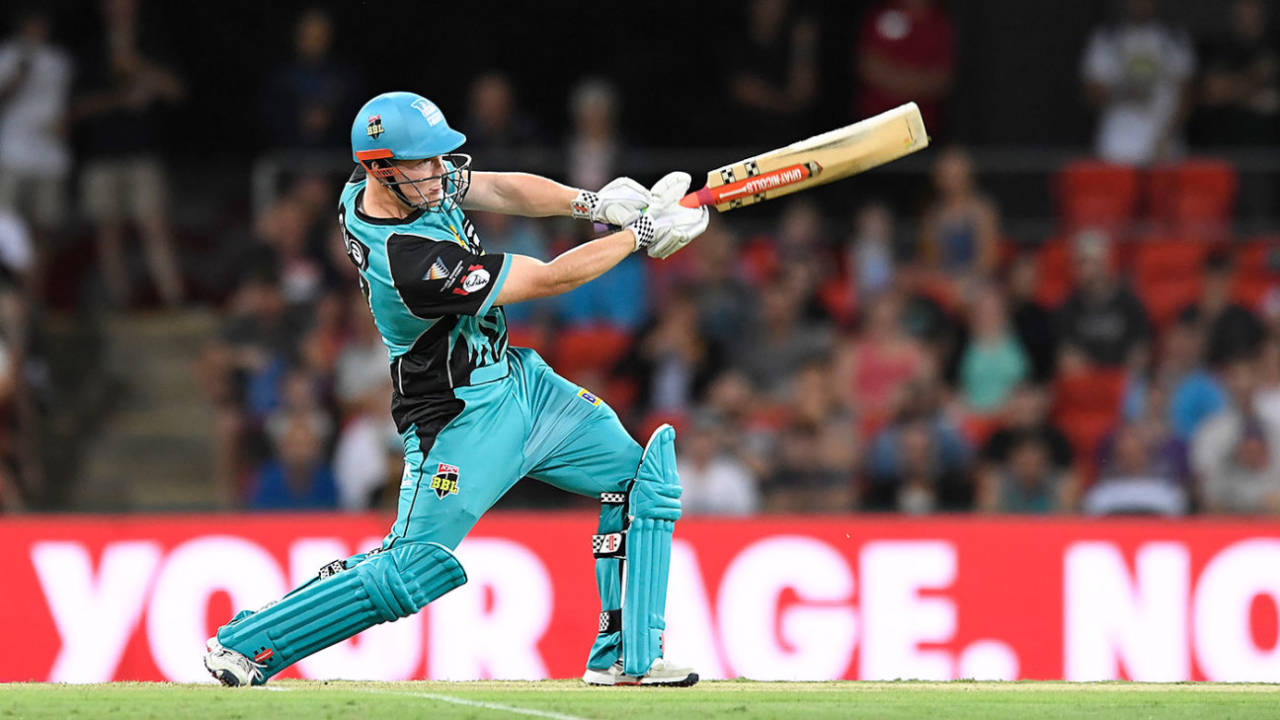One takes place in front of 30,000 people and a TV audience multiple times more, while you're lucky if 30 come along to the other. But
Max Bryant gets more nervous before batting in grade cricket than he does before a Big Bash fixture.
"I feel more pressure on me to score runs in grade cricket," he says, which should buoy anyone nervous about the regard in which club cricket is held among Australia's next generation of batsmen.
Bryant is one of a handful of young Australian batsmen introducing themselves to the nation through BBL cricket. Others like Jason Sangha and
Jack Edwards form part of the crew too. They arrive at a time when Australian run gluttony is scarce, production lines are under scrutiny, and a royal commission into the impact of white-ball cricket on red-ball batting might well be welcomed by a country desperate for runs in any format.
If Shane Watson was the archetypal cricketer of the 2000s, then Bryant represents the evolution for 2020. To watch him bat is to see a study in poise and power, combining classic cricket "shapes" alongside brute force. He has been a commanding influence atop Brisbane Heat's order this tournament, regularly supercharging their innings during the Powerplay with cuts, pulls and drives that wouldn't have looked out of place in any era.
His classic shapes would presumably please many within Australian cricket's old guard, who seem to worship exclusively at the altar of all things still and straight, with a dash of repugnance reserved for excess movement and any shot that can be labelled "funky". One need only witness the stern silence in the Fox commentary box earlier this summer as Usman Khawaja explained that that the game had indeed changed, that reverse sweeps and paddles were okay, for evidence of the "disconnect" between playing generations Khawaja was referring to.
But players like Bryant and Edwards represent a welcome evolution, or devolution, depending upon how you like your cricketing purity. They are part of a new breed of emerging player aiming to assemble batting mechanics that equip them for all three formats.
Edwards, in his first season of BBL cricket, speaks earnestly about "enjoying the challenge of thinking through the game situation" when batting in the shorter forms, and admiring the composure of MS Dhoni and Virat Kohli in measuring a chase. In the same breath, he reflects glowingly on the time he spent over the winter with coach Chris Rogers, working together on "dominating off stump" in the red-ball format. Earlier this season Edwards managed to get
his maiden Shield ton, but notes with caution that he has never made the transition from white ball back to red ball, and is very conscious about needing to do it effectively.
So can you become a better red-ball batsman through white-ball cricket?
"It's absolutely helped my batting," says 25-year-old
Ryan Gibson, a NS-contracted player and Sydney Thunder batsman. "It brings in a lot more shots to use. It's opened up my game so much more and allowed me to call on certain shots when the conditions allow it." Gibson speaks highly of his time with power-hitting specialist Julian Wood, a former first-class player with Hampshire, who assists in the mechanics of clearing the ropes. Wood was hired by Thunder this season to help players understand the positions they need to be in to hit with most power. It is heavily baseball influenced.
That said, Gibson thinks that the white-red transition is less mechanics and more mental. At 25, he is grateful that his underage international pathway still allowed for some red-ball cricket, whereas now the Australian Under-17 and U-19 set-up deal exclusively in white-ball games.
A senior coach explains that young players are now learning to play with a tempo of over 100 and he worries about how they will react mentally when confronted with a difficult pitch that calls on precise defence. It's a world away from the approach of a recently retired exemplar of Australian batting who spoke of looking to defend every ball first, then extending if the ball was loose and he could score. He says now it's the reverse. "The art of scoring ones and twos off good bowling has died off significantly," the coach said.
Whether the new breed of Bryant, Edwards, Sangha and Co can mix subtlety with an "attack-first mentality" is a huge question underpinning Australia's batting hopes. Until then, they will show their wares in front of hundreds of thousands through the Big Bash on TV, and in Bryant's case, do so with more freedom than he might at grade level.
Sam Perry is a freelance sportswriter and co-author of The Grade Cricketer. @sjjperry
